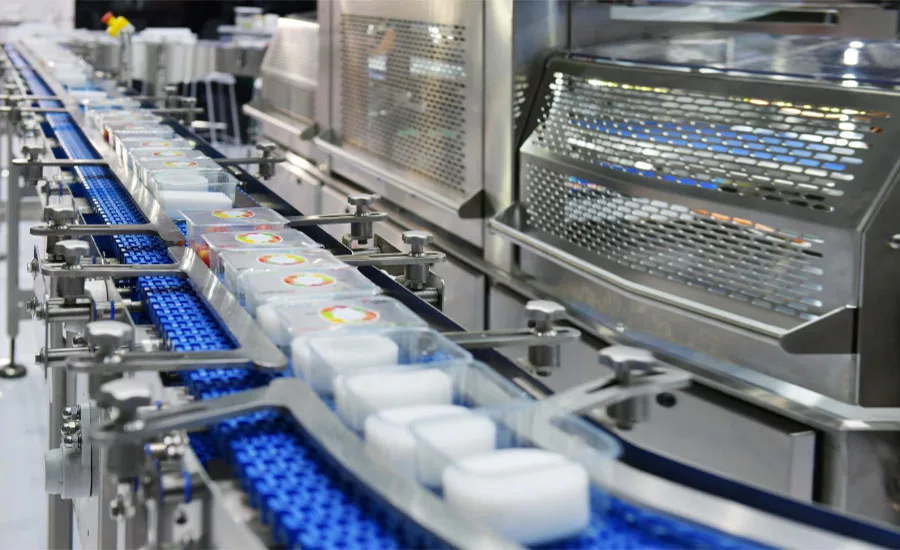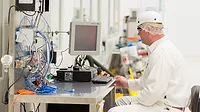Sustainability through automation
Use automation to help achieve green packaging goals
You can’t lose when you actively work at reducing waste and creating sustainable packaging goals

Packaging lines need to be able to adapt to product changes quickly and be outfitted with smart sensors that can spot problems in product or equipment in real time. Source: EU Automation
Today, two major factors are driving the packaging industry towards greater sustainability: prospective legislation* and consumer demand. Though there is little participation in the U.S. in plastic recycling (estimated under 10%), the green packaging market registered a value of $237.74 billion in 2019 and is expected to grow to 313.93 billion by 2025, according to research from Mordor Intelligence.**
Many food and beverage processors have already made moves to decrease plastic use and provide more recyclable options. Claudia Jarret, country manager of global parts-supplier EU Automation, explores how automation technology can help the packaging industry go green.
 |
| Claudia Jarret, country manager of global parts-supplier EU Automation |
FE: How can automation help support processors with becoming more sustainable in terms of plastic packaging?
Claudia Jarret: Automation can help manufacturers achieve their green packaging goals, and also address other issues of manufacturing sustainability. Sustainability in packaging can mean a variety of things. It may involve using recycled or recyclable materials, eliminating the amount of plastic that is used in packaging, or reducing the total overall volume of packaging used.
Reducing this overall volume doesn’t only make sense for sustainability, but also companies’ bottom lines. More lightweight packaging uses fewer resources, benefits the planet and can lower material costs. In fact, reducing a product’s footprint will save costs throughout the supply chain, saving space in warehouses and during delivery.
However, even purely in terms of sustainability, it is also necessary to strike a balance between minimizing the amount of packaging while also making sure that products reach customers securely. Failure to do this risks increased food waste, poor customer satisfaction and an impacted profit margin.
Once a processor has effectively minimized the amount of packaging, the next step is to reduce waste in the packaging process itself.
FE: How do you decrease waste with automation?
Jarrett: Industrial automation can play a key role in ensuring that less material is wasted. Using a packaging machine to cut out packaging pieces, for example, can ensure maximum use of a sheet of material. It will create an efficient pattern, cut accurately and always use the set amount.
Machines offer enhanced levels of reliability and repeatability compared with human counterparts, and eliminate the risk of product wastage due to human error.
However, fixed machinery on process lines—even those supported by human labor—can be inflexible in adapting quickly to lightweight materials, or less rigid packaging. Instead, packaging companies should consider investing in modular machines that can change their function accordingly; or robots that are equipped with various end-of-arm tooling capabilities to support human workers by performing multiple applications.
Flexible automation solutions such as these can help ease and accelerate the change to environmentally-conscious and innovative materials, as they are able to adapt to new products, or packages of different shapes and sizes.
Meanwhile, new material innovations are continually being developed that could replace traditional plastics. As new packaging designs and materials are developed, companies need a packaging line that can adapt to these changes.
By taking advantage of artificial intelligence (AI) and big data, manufacturers can forecast their needs more accurately and prevent over-ordering materials. But packaging materials isn’t the only source of waste. EU Automation has been helping processors reduce waste from machinery, as well. For example, the company’s service exchange offering allows manufacturers to dispose of broken parts by exchanging them for working ones—an economically and environmentally better route.
FE: What are some of the issues in switching to sustainable packaging?
Jarrett: When switching to sustainable packaging, considering the use of material is only the start. Processors should also ensure that the production process minimizes its use of resources, like energy and water, and maximizes its efficiency.
Automated solutions can help to streamline these processes, and some manufacturers combine automated and manual methods. In the case of an automated bottle capping machine, for instance, this might involve human workers manually capping the products, or the use of semi-automated equipment to maintain high production levels.
With fully-automated packaging operations, each individual product can move through the line seamlessly, avoiding delays or human error. That said, these processes still need humans to keep an eye on things and make important decisions. Automated monitoring—specifically, through the use of sensors—can also help managers identify, and cut out, unnecessary steps in the packaging process.
FE: The old axiom, “if you can’t sense it, you can’t control it,” is a prerequisite to automation. What role(s) should sensors play in the automation environment?
Smart sensors can be used to identify any quality control issues as they occur, while also determining the source of the issue quickly, minimizing the number of faulty products and shortening any downtime. Equally, they can be used to identify any lags at a particular production stage, to ensure that manufacturing managers are able to maximize the efficiency of the production line.
Sensors are also able to track energy and water use, measure yield, temperature, time and pressure, and alert for predictive and preventative maintenance, all helping to keep production running smoothly and effectively.
Smart sensors can be retrofitted to existing equipment, which can be a more cost-effective route to digitalizing production equipment. It is also a way to improve efficiency, even if a a machinery upgrade isn’t planned for a while. An automation parts specialist like EU Automation can help manufacturers source suitable sensors for your existing equipment.
FE: The benefits to automating sustainable packaging—even for small food processors—are too important to ignore, aren’t they?
As legislative pressure and consumer desire for environmentally friendly packaging options continue to grow, manufacturers should take advantage of the opportunities presented by the sustainable packaging market. By using automation solutions effectively, it is possible to reduce waste, increase efficiency, and adapt quickly to a changing market, benefiting both your business and the planet. As requirements for shorter runs and faster cycle times increase, packaging companies will come to rely on the flexibility of these technologies.
For more information, visit EU Automation, 1-877-830-2021; 871 Busse Road, Elk Grove Village, Chicago, IL 60007.
Notes:
*The US Plastic Waste Reduction and Recycling Act (H.R. 7228) was introduced in June 2020. If it becomes law, it will set new goals for sustainability and recycling. The bill, valued at almost half a billion U.S. dollars, supports related research from five Federal agencies for five years and stands little chance of passing according to govtrack.
** “Green Packaging Market - Growth, Trends, And Forecasts (2020 - 2025),” Mordor Intelligence.
Looking for a reprint of this article?
From high-res PDFs to custom plaques, order your copy today!








